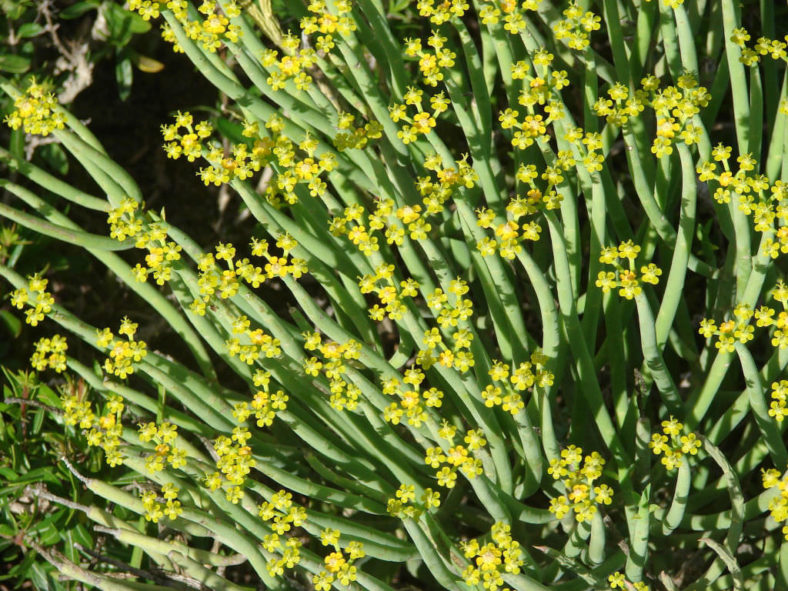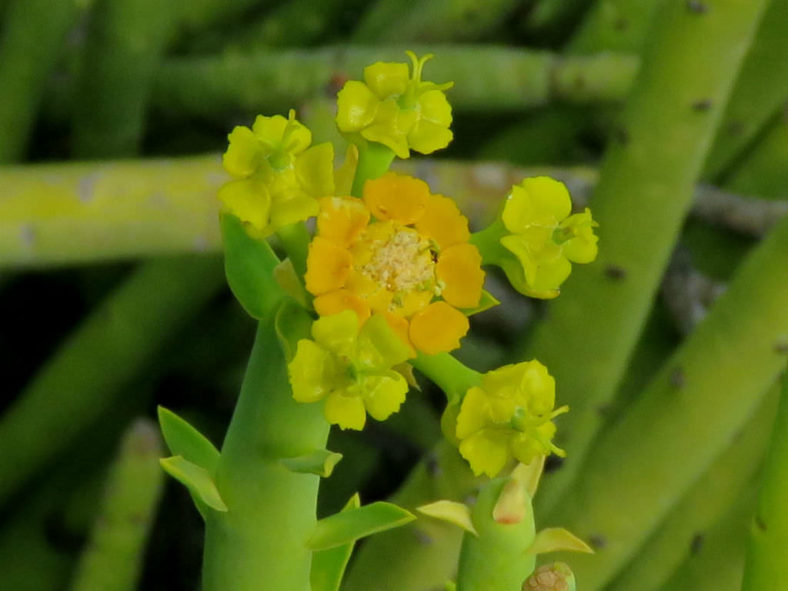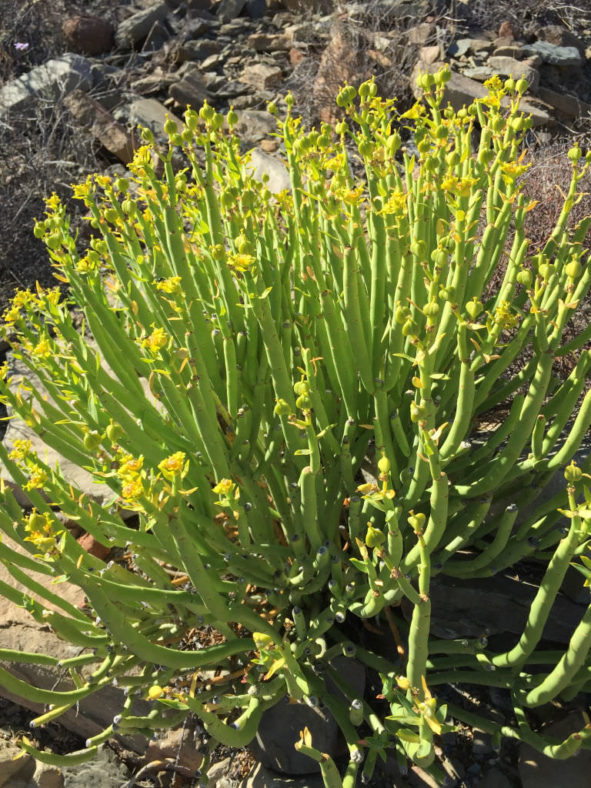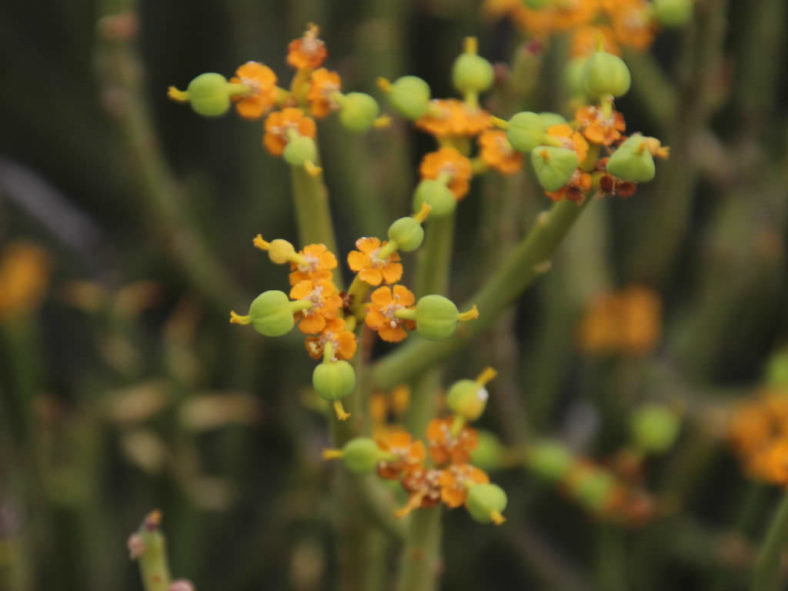Scientific Name
Euphorbia mauritanica L.
Common Name(s)
Golden Spurge, Jackal's Food, Pencil Milkbush, Yellow Milkbush
Synonym(s)
Tirucalia mauritanica, Tithymalus mauritanicus
Scientific Classification
Family: Euphorbiaceae
Subfamily: Euphorbioideae
Tribe: Euphorbieae
Subtribe: Euphorbiinae
Genus: Euphorbia
Etymology
The specific epithet "mauritanica (maw-rih-TAWN-ee-ka)" refers to Mauretania (present northern Morocco and western and central Algeria north of the Atlas Mountains), an ancient country in North Africa that existed as a tribal kingdom of the Berber Mauri people. Carl Linnaeus officially described this species in 1753, probably based on Dillenius' description of Tithymalus aphyllis mauritaniae.
Origin
Euphorbia mauritanica is native to South Africa (Northern Cape, Western Cape, Eastern Cape, Free State, KwaZulu-Natal) and Namibia.
Description
Euphorbia mauritanica is a succulent shrub with many fleshy, upright, pencil-like branches that grow from a thick central root. It can grow up to 3 feet (90 cm) tall and up to 6 feet (1.8 m) wide. The yellowish-green to grey-green stems are cylindrical with alternate leaf scars. The tiny leaves are present only on the tips of the young branches.
The bright yellow flowers appear in clusters at the ends of young branches from winter to spring.

How to Grow and Care for Euphorbia mauritanica
Light: Most Euphorbias are sun lovers, but some will tolerate partial shade. Place your indoor E. mauritanica on windows with southern or southeastern exposure. You may place the pot on the balcony or in the garden from spring to fall.
Soil: Euphorbias require well-drained soil. They even thrive in poor, dry soils. Use a commercial mixture formulated for cacti and succulents, or make your own potting mix.
Hardiness: High summer temperatures are not a problem for succulent Euphorbias, but minimum winter temperatures vary. E. mauritanica can withstand temperatures as low as 25 to 50 °F (-3.9 to 10 °C), USDA hardiness zones 9b to 11b.
Watering: Succulent Euphorbias can survive drought, but that does not mean they need it. Water from spring to fall when the top inch (2.5 cm) of soil feels dry. Reduce watering in winter. Give your E. mauritanica just enough water to prevent wilting.
Fertilizing: Every Euphorbia will benefit from fertilizer. Plants in pots need regular feeding. Apply a balanced fertilizer in a 10-10-10 NPK formulation, diluted to 1/4 strength once a week during the growing season.
Repotting: Euphorbias will benefit from repotting, but they do not need to be repotted yearly. However, when your E. mauritanica is outgrowing its pot, it is time to repot the plant in a larger pot and give it a fresh potting mix.
Propagation: The easiest and fastest method of propagation for many species is by using cuttings. Euphorbias can also be grown from seeds, but they can be difficult to germinate and even hard to find. The best time to take cuttings is in spring or summer. Sow the seeds in spring.
Learn more at How to Grow and Care for Euphorbia.
Toxicity of Euphorbia mauritanica
All Euphorbias produce a toxic white milky sap that can cause irritation to the skin and eyes. Therefore, keeping your E. mauritanica away from children and pets is best.
Links
- Back to genus Euphorbia
- Succupedia: Browse succulents by Scientific Name, Common Name, Genus, Family, USDA Hardiness Zone, Origin, or cacti by Genus
Photo Gallery
Click on a photo to see a larger version.


